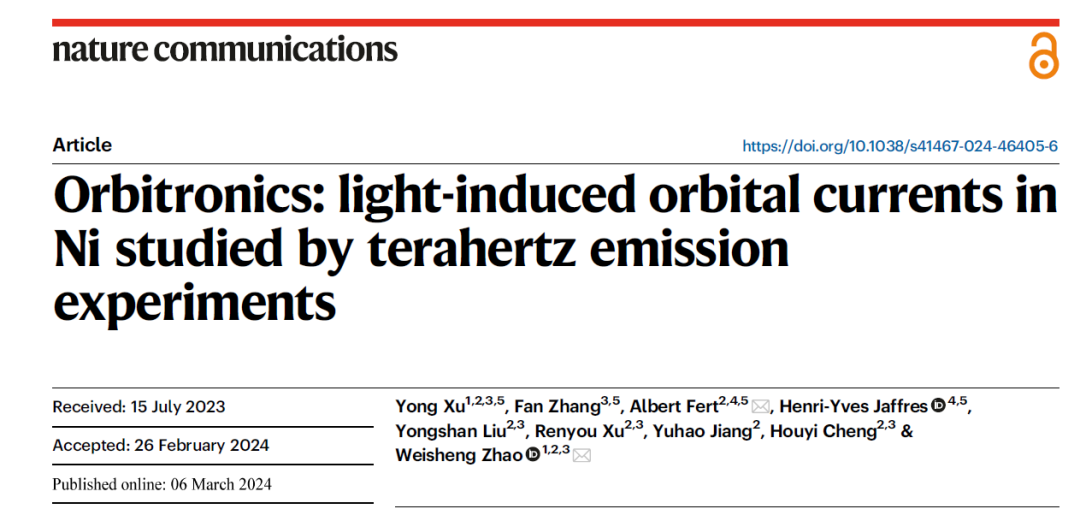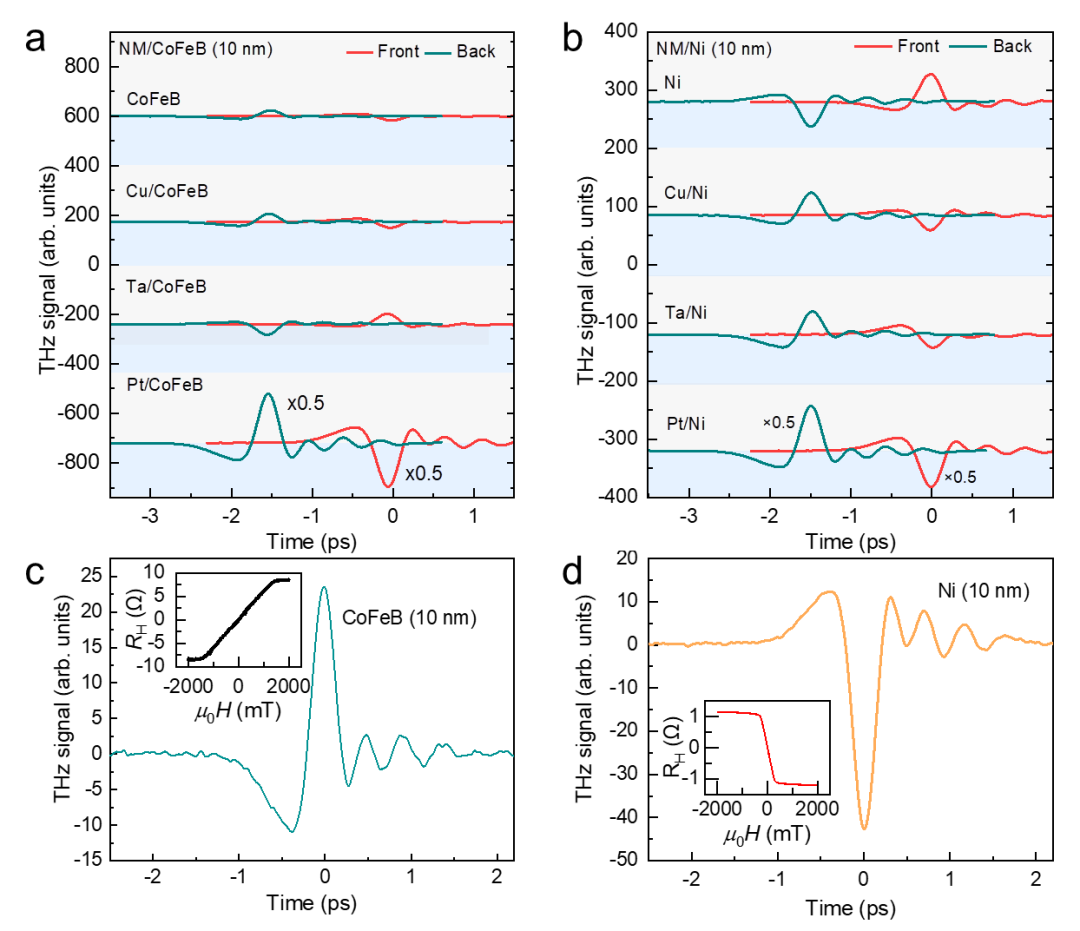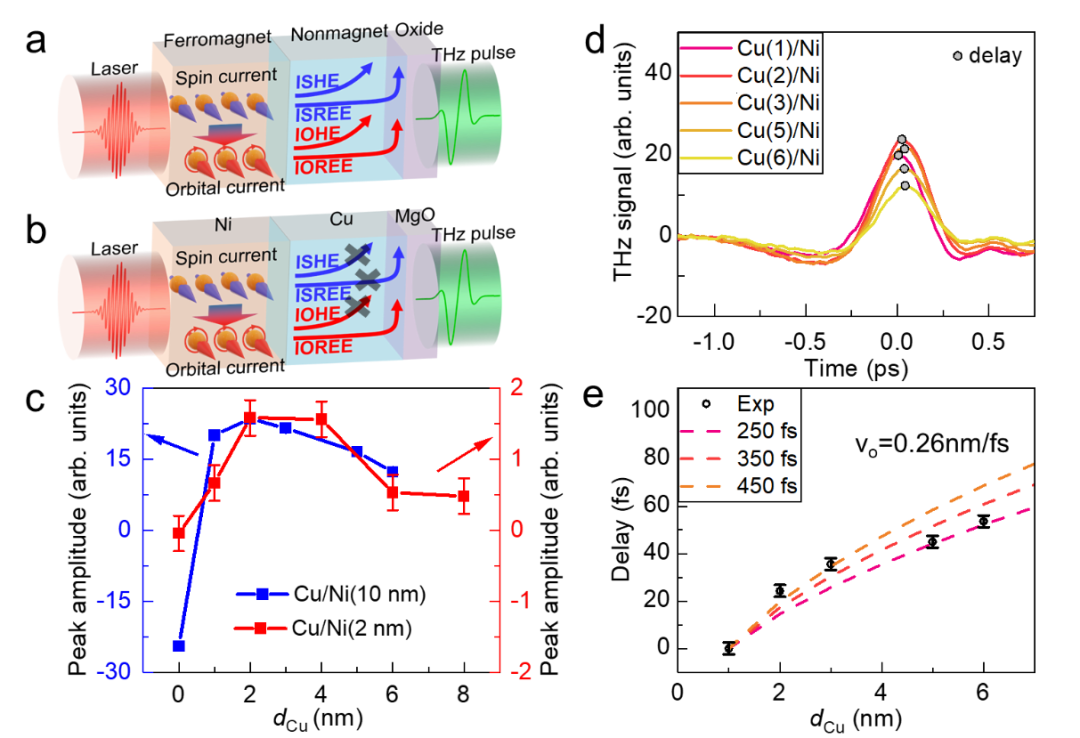Recently, Professor Zhao Weisheng’s team from the National Key Lab of Spintronics of the International Innovation Institute, Beihang University, and Professor Albert Fert’s team from Paris-Saclay University, collaborated to achieve important progress in the field of orbitronics. Their research results were published online in the journal Nature Communications under the title “Orbitronics: light-induced orbital currents in Ni studied by terahertz emission experiments”. They proposed a new experimental method based on light-induced orbital currents and terahertz emission, discovered light-induced ultrafast orbital currents in multilayers associating Ni with nonmagnetic metals NM and MgO, and extracted information on the velocity and orbital flip time of the orbital carriers. This work opens up new methods for the development of next-generation integrated circuit devices.

Recent research has found a charge current can be converted into an orbital current via the orbital Hall effect (OHE) or the orbital Rashba-Edelstein effect (OREE). According to the Onsager reciprocal relation, the inverse effect of the OHE or OREE should convert an orbital current into a charge current. In this research, the team detected light-induced orbital-to-charge conversion in the Ni/NM/MgO multilayers by experiments of THz emission. By analyzing the influence of Cu on the THz emission spectrum in the Ni/Cu/MgO multilayers, it was found that ultrafast charge currents are formed by the inverse orbital Rashba-Edelstein Effect (IOREE) at MgO/Cu interface.

Fig. 1 A comparison between THz signals from MgO/NM/CoFeB and MgO/NM/Ni heterostructures

Fig. 2 Conceptional diagrams of the spin/orbital-charge conversion and the impact of Cu thickness on THz emission from MgO/Cu/Ni
Associate Professor Xu Yong and Associate Researcher Zhang Fan from Beihang University, and Professor Henri-Yves Jaffres from Paris-Saclay University are the co-first authors of this paper. Professor Zhao Weisheng from Beihang and Professor Albert Fert from Paris-Saclay are the co-corresponding authors. This work was supported by the National Key Research and Development Program of China and the National Natural Science Foundation of China.
In recent years, the National Key Lab of Spintronics of Beihang University has been committed to the technical research and development of low-power and high-speed spin electronic devices. It has made a series of progress in the physical mechanism, material preparation, and device technology, and has published a series of high-level papers in international top journals such as Nature Electronics and Nature Communications.

The National Key Lab of Spintronics of the International Innovation Institute of Beihang University, located in the international campus in Hangzhou, aims to serve the national strategic needs of integrated circuits, and continues to play an important role as a source of original innovation, a reservoir of high-end talent, and a technology incubator, effectively serving the development of high-level scientific and technological self-reliance.

Link to the article: https://www.nature.com/articles/s41467-024-46405-6
Reviewed by: Li Jianwei
Edited by: Jia Aiping
Translated by: Han Xu

